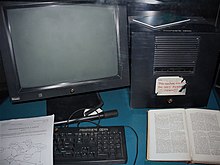EXTRANET
Extranet is a controlled private network that allows access to partners, vendors and suppliers or an authorized set of customers – normally to a subset of the information accessible from an organization's intranet.
An extranet is similar to a DMZ in that it provides access to needed services for authorised parties, without granting access to an organization's entire network.
An extranet is a private network organization.
Advantages of Extranet:
- Exchange large volumes of data using Electronic Data Interchange (EDI)
- Share product catalogs exclusively with trade partners
- Collaborate with other companies on joint development efforts
- Jointly develop and use training programs with other companies
- Provide or access services provided by one company to a group of other companies, such as an online banking application managed by one company on behalf of affiliated banks
Disadvantages of Extranet:
- Extranets can be expensive to implement and maintain within an organization (e.g., hardware, software, employee training costs), if hosted internally rather than by an application service provider.
- Security of extranets can be a concern when hosting valuable or proprietary information.




